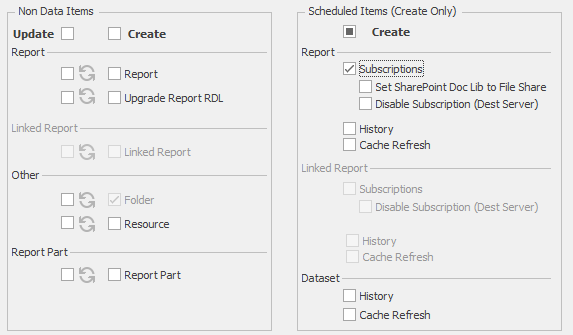
Below is the section for item selection. This is only enable after the Migrate Items check box is checked
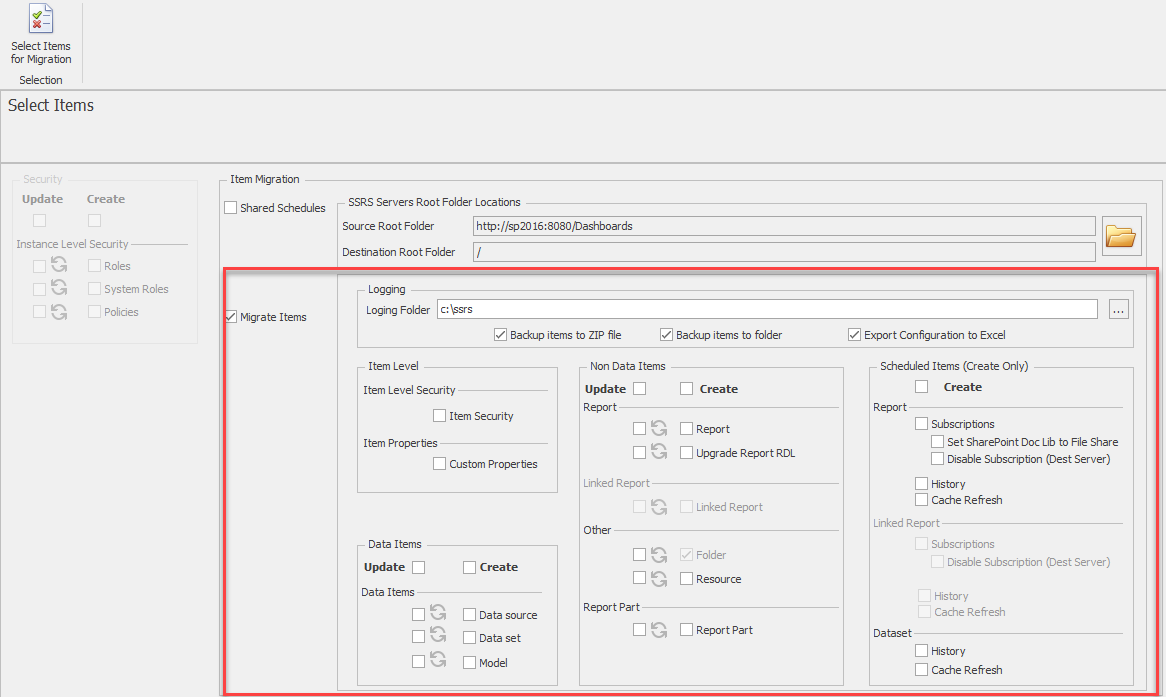
Note
1.The checkboxes Update and Create are select All options for items below.
2.Some items are grayed out this is due to SSRS limitations on version and mode. eg. Linked reports are grayed out as it is not supported in SharePoint
3.SSRS Migrate has the intelligence to understand if you are migrating anything in the schedule Items (Create Only) and the shared schedule is not checked this will still become part of the migration.eg migrate subscriptions.
Item Level
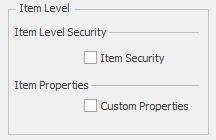
•Item Security. Set the security on a per item basis. Where the SSRS mode is different between source and destination (eg. integrated to native) a translation occurs as follows
Integrated to native
Source |
Destination |
|---|---|
Owners |
Content Manager |
Members |
Publisher |
Visitors |
Browser |
Native to integrated
Source |
Destination |
|---|---|
Content Manager |
Owners |
Publisher |
Members |
Browser |
Visitors |
•Custom Properties. Each SSRS item can have custom properties defined in addition to the default properties such as Description and Hidden. Selecting this also copies the custom properties.
Data Items
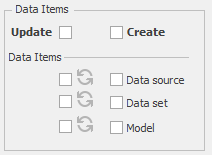
For Data Items you have the options for create/update. This means you can choose to deploy to the destination server only items that exists (using the update option), or deploy only new items to the destination server (using the create option)
Remember if only deploying a data set the data source must already exists on the destination server.
Non Data Items
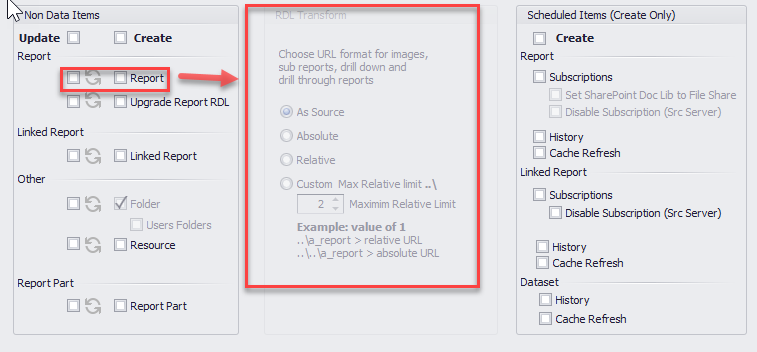
For Non Data Items you have the options for create/update. This means you can choose to deploy to the destination server only items that exists (using the update option), or deploy only new items to the destination server (using the create option)
Remember if only deploying a linked report the report must already exists on the destination server.
selecting create report or update report will enabled the RDL transformation group box
To upgrade the RDL to the current SSRS version select Upgrade Report RDL (below Report) highlighted in above screenshot.
RDL transformations.
RDL transformations update images, sub reports, drill down and drill through reports.
You can choose to
1.As Source- keep relative or absolute URL as the source server
2.Absolute- convert all URL's in the RDL to absolute URL's if there are relative URL's on the source server these are converted to absolute
3.Relative- convert all URL's in the RDL to relative URL's.
4.Custom- choose the level of for relative url for example specifying a max relative limit of 1 for will convert an image ..\image.jpg to relative but ..\..\image.jpg (has a relative count of 2) to an absolute URL
this fixes SharePoint URL's SSRS migrate understands the folder/sub folder. So for example:
source
Root folder: http://source/site/doc
Image url: http://source/site/doc/image.rdl
Destination
Root folder: http://destination/new site/a new folder/sub folder
the URL image in the RDL deployed to the destination is transformed to
http://destination/new site/a new folder/sub folder/image.rdl
SSRS Migrates understands if the extension is needed for subreports etc. (needed for SharePoint, not needed for native) and will correctly convert the URL. This applies to native to SharePoint and SharePoint to native.
Scheduled Items (Create Only)
Scheduled Items are create only.
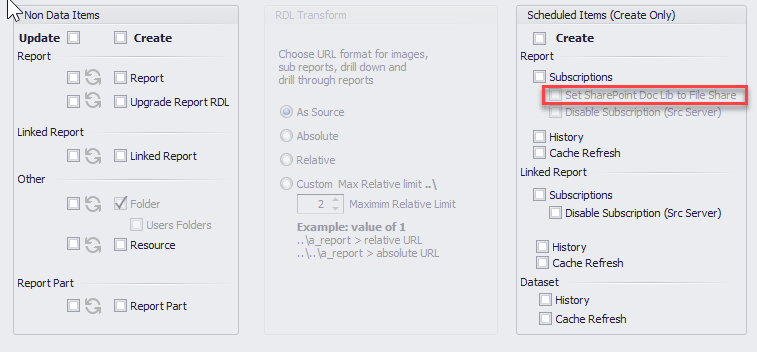
SharePoint Subscription Transformation
This transforms SharePoint Document Library to FileShare. This is only enabled when migrating from SSRS integrated to native.
If the respective item is selected then the items are only applied to the respective item.
eg. Migrate Reports where it exists on destination server (update), and create subscriptions for updated reports
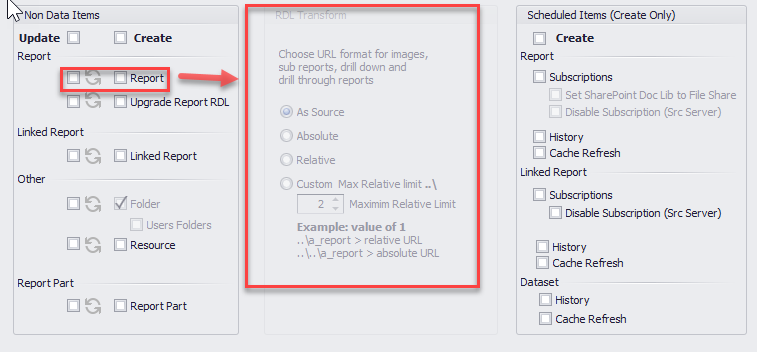
eg. Reports are not selected for either create or update in this case subscriptions are created where the report exists on the source and destination.
